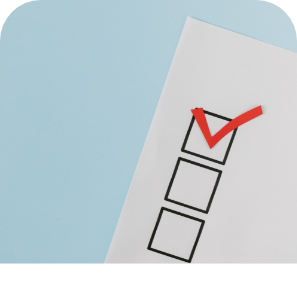Finding a debt solution that works for you doesn’t have to be difficult. There are numerous debt management options that can accelerate the time it takes to become debt-free and regain control of your credit.
Filing a Consumer Proposal is often one of the best ways to navigate your way out of debt. Like any financial undertaking, it is important to be well-informed about what the process means for you.
That’s why we are happy to share everything there is to know about filing a Consumer Proposal in Alberta, including the answers to common questions we receive from clients. Get on your way to a debt-free future and learn more about your options today.
A Consumer Proposal is a legal debt settlement agreement between you and your creditors that is facilitated by a Licensed Insolvency Trustee (also known as a Trustee, or LIT).
Individuals who do not have the ability to pay both the required interest and principal to become debt free on their own. In Canada, there are some basic requirements.

If you owe more than $250,000 in debts, you could be eligible for a Division I Proposal. Contact us to discuss what this option means for you.

If you owe more than $250,000 in debts, you could be eligible for a Division I Proposal. Contact us to discuss what this option means for you or check out this link to learn more about the process of filing a Division I Proposal.
There are numerous advantages to a Consumer Proposal, which make it an attractive option for those facing serious debt.
There are also disadvantages to a Consumer Proposal. The biggest one is that it typically takes longer to complete as compared to bankruptcy. However, this can mean that the monthly payments are lower than what you would be required to pay over a shorter period in a bankruptcy.
A Licensed Insolvency Trustee also known as a Trustee or his administrator, licensed by the Office of the Superintendent of Bankruptcy. This means Trustees (including those at BNA) are federally regulated with oversight from various regulatory bodies to ensure we are abiding by a strong code of ethics. Trustees are the only individuals licensed to file and administer Consumer Proposals and Bankruptcies.
The Trustee is responsible for providing a detailed review of your specific circumstances and educate you on your options for debt relief. Most Trustees provide an initial consultation for free. It is important to be cautious if you are being asked for payment, as this could mean you are not dealing with a Trustee, but rather an unlicensed debt consultant.

They are NOT your legal representative or fiduciary (a person who holds a legal or ethical relationship of trust with one or more other parties).
While there are many different types of unsecured debts, some are more common than others. While it’s not always black-and-white which debts can be included in a Consumer Proposal, the following examples of unsecured debt are typically eligible:
Credit Card Debt
Personal And/Or Bank Loans
Unsecured Lines Of Credit
Payday Loans
Insured Mortgage Deficiencies
Canada Revenue Agency (Tax) Debt
Vehicle Loan Shortfalls
Student Loans*
Statements of Claim/ Judgements*
Past Due Child/Spousal Support*
Although it is a very useful solution, there are specific types of unsecured debts that a Consumer Proposal cannot service. This includes:
Ongoing amounts owing for child and/or spousal support, and any amount that survives for past due amounts.
Student Loan amounts where the debtor has not been out of school for more than 7 years.
Debts that arose from fraud, embezzlement, misappropriation, or defalcation while acting in a fiduciary capacity.
Court-imposed fines/penalties (eg. speeding tickets)
Fines, penalties or restitution orders imposed by the Court in respect of an offense.
Awards for damages in respect of bodily harm, sexual assault or wrongful death.
Ongoing amounts owing for child and/or spousal support, and any amount that survives for past due amounts.
Student Loan amounts where the debtor has not been out of school for more than 7 years.
Debts that arose from fraud, embezzlement, misappropriation, or defalcation while acting in a fiduciary capacity.

Your Licensed Insolvency Trustee will review your unique circumstances and recommend a reasonable starting offer for your Consumer Proposal based on various factors such as your income, assets, and household size. Your monthly budget is also important to assess how much money you can allocate to debt repayment each month for the next 5 years.
This monthly payment will cover all of your unsecured debt, and eliminate the payments you are currently making. You are required to maintain your secured debt payments, such as your mortgage or car payments, if you wish to keep those assets.
Payments are made to your Trustee and held In Trust and are generally distributed to your creditors once a year. Each creditor will receive a percentage of the amount In Trust, based on the amounts owed to each creditor.
In most cases, creditors will be asked to accept a significant reduction in what is owed to them. The reasoning is that even if it’s only a fraction, it would be better than the alternative, which is bankruptcy. If a bankruptcy is filed, creditors are only entitled to receive what is outlined in the Bankruptcy and Insolvency Act.
They can either accept, reject or counter your offer.
For a Consumer Proposal to be accepted (and become legally binding on you and all of your unsecured creditors), it simply requires the majority of your creditors to vote in favour.
As mentioned earlier, once accepted, even creditors who did not vote in favour will be required to abide by the terms.
















The short answer is no. It is up to you and your creditors to agree on the terms of the Consumer Proposal for it to pass. There is no guarantee that your Consumer Proposal will pass as initially filed. It is up to the creditors to decide whether they accept, reject or counter your proposal anywhere in Alberta including Calgary and Edmonton.
However, your Trustee will be working with you and the creditors to facilitate the process. (At BNA, we have an exceptionally high acceptance rate!)
When choosing a Trustee, it is always important to go with someone you are comfortable with and feel that you can trust (much like choosing a hairdresser, doctor, or even a mechanic). The Trustee will be working closely with you for the next 5 years, so having someone that you respect, like, and trust will be extremely important for a healthy working relationship.
When you are contacting a Trustee, be particular about how they operate and what kind of customer service you can expect. For example, if your initial call is answered from a call centre, once your file is in process, you may be dealing with an out-of-province administration team thereafter, with little to no contact with a Trustee or their immediate support staff.
Sometimes choosing a smaller family firm like BNA, as opposed to a larger corporation, will mean you have continued access to the person you made that initial connection with. At BNA, we are proud to offer flexible proposal terms that suit your specific situation. We are not afraid to think outside of the box. Another bonus – smaller firms are often more open to taking on more complicated cases that larger firms may turn down.
Watch for red flags: Never give in to undue pressure to decide on a Trustee. If you feel pressured, you can get a second opinion from another Trustee at a different firm.

BNA Debt Solutions is celebrating 25 years of serving Albertans as a family-owned and operated business. We’ve gained a reputation for listening first and explaining your options second. Our recommendations are based on what’s best for you.
Canada has two Credit Reporting Agencies (also called Credit Bureaus): Equifax Canada and TransUnion Canada. Their job is to compile credit risk profiles on individuals, based on financial history. These profiles are used by banks, credit card companies, car dealerships, and other lenders to determine if the borrower is a good credit risk or not.
During the Proposal, the debts included in the Proposal will show as a 7 or a “Settlement” rating, which will show lenders that you are making regular payments through a debt management option. This rating will typically appear on your credit profile for 3 years following the final payment of your proposal – up to a maximum of 6 years from the date the proposal was filed.
The good news is that if you meet all of the terms, you will likely be able to successfully apply for credit much sooner than that, depending on your overall risk profile.
Although it generally has a bad reputation, choosing bankruptcy can sometimes make more sense for different types of debts and circumstances.
If you file for bankruptcy, you are still required to make payments to your Trustee, and these payments are calculated based on your monthly income, household size and your assets. If your income is low and you have minimal to no assets, bankruptcy may be the fastest and least expensive way for you to resolve your financial situation.
For those with significant monthly income and/or significant assets, a Consumer Proposal can be a more feasible option as your monthly payments would be lower and you retain possession and control of your assets.
Another important difference is that bankruptcy will typically appear on your credit report longer than a Consumer Proposal, which impacts your ability to build back good credit, especially if you have a prior bankruptcy.
No two cases are the same when it comes to managing personal debt. The best course of action you can take is to talk with a Trustee to figure out which path is right for you.
For more information, check out this blog article:
Bankruptcy vs. Consumer Proposal.